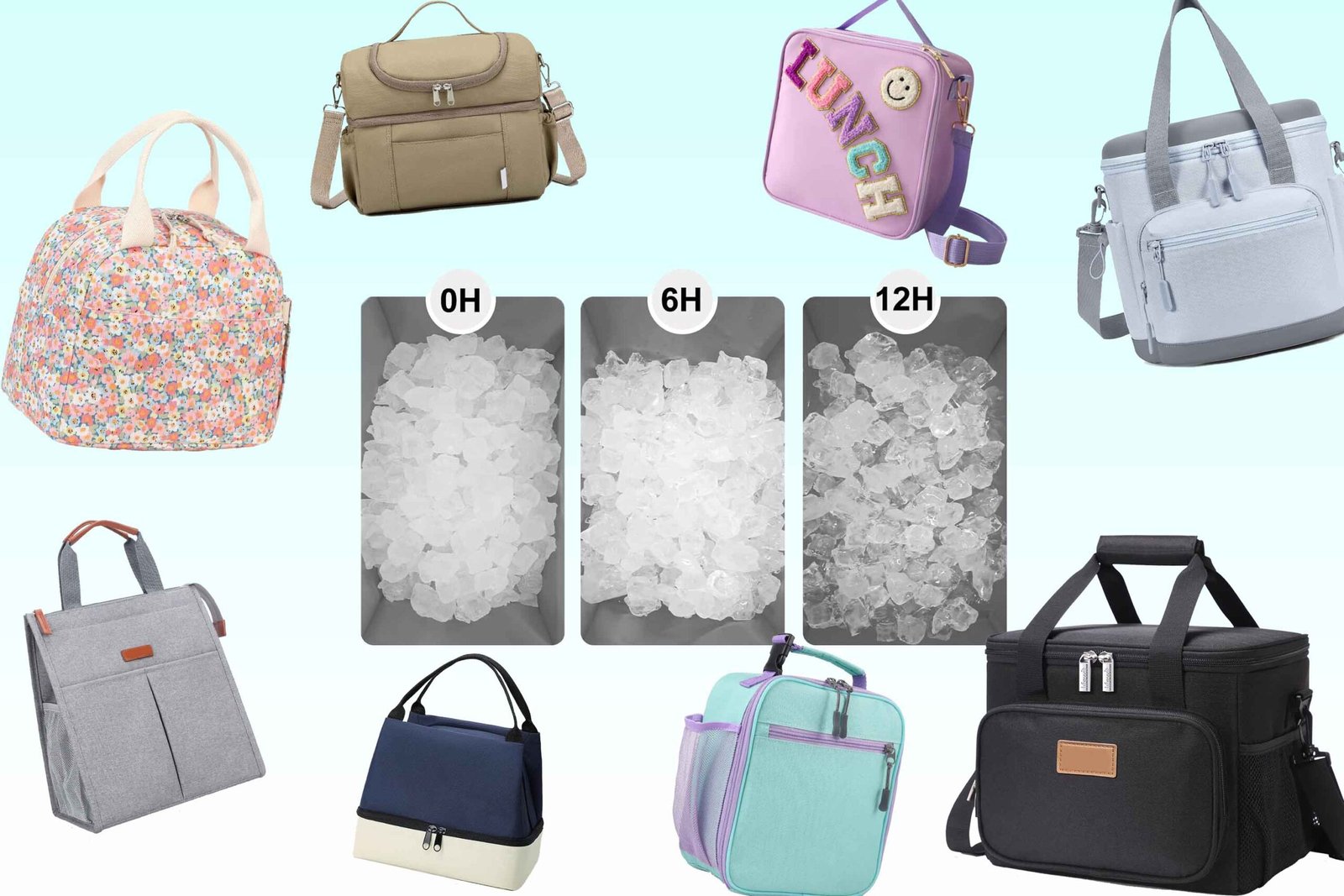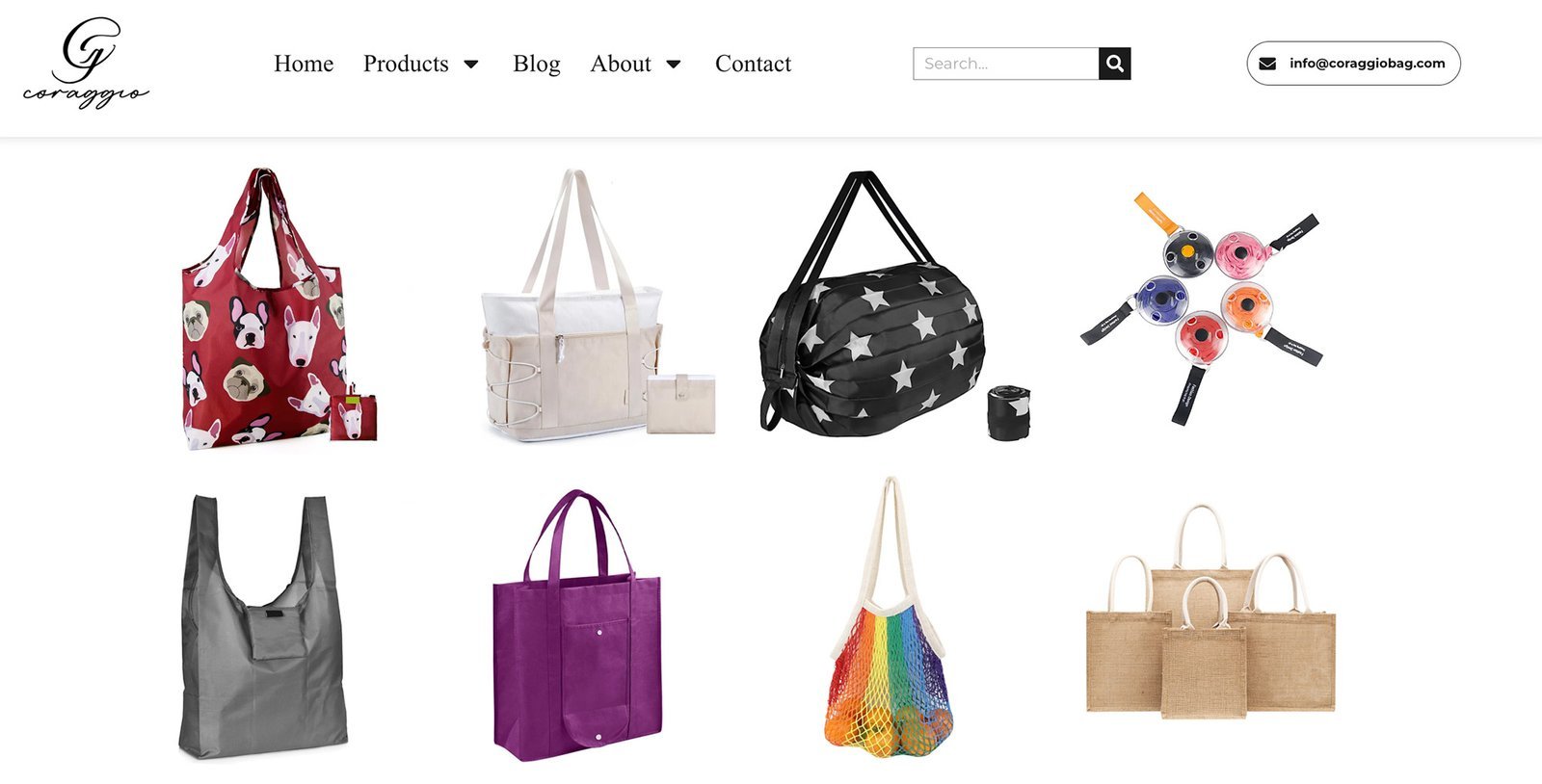Tired of opening your lunch bag to find warm, spoiled food? I’ve been there too, and it’s frustrating when you’re looking forward to a fresh meal during your busy day.
The best lunch bags for 10-hour cold retention are high-quality insulated bags with thick thermal liners, paired with ice packs. Brands like YETI can maintain cold temperatures for 12+ hours, while most standard insulated lunch bags provide 6-8 hours of cooling when properly packed.

Let me share what I’ve learned after years in the bag manufacturing industry. The right lunch bag doesn’t just keep your food cold—it ensures food safety and preserves taste, which is why understanding the technology behind cold retention1 is so important.
How to Keep Food Cold for 10 Hours?
Have you ever packed a perfect lunch only to find it warm and unappetizing by mealtime? This common problem has simple solutions that can transform your lunch experience.
To keep food cold for 10 hours, use a high-quality insulated lunch bag2 with thick PEV thermal liners, add at least two ice packs positioned above and below your food, pre-chill your lunch bag and food overnight, and keep the bag closed and out of direct sunlight.

Effective Cold-Retention Strategies
When I first started designing lunch bags, I quickly learned that maintaining cold temperatures requires a systematic approach. Here’s what works best:
Ice Pack Placement Matters
The strategic placement of ice packs significantly impacts temperature maintenance. Place one ice pack at the bottom of your lunch bag and another on top of your food. This "sandwich" method creates a cold environment that surrounds your meal from all sides. For maximum effectiveness, use slim ice packs that cover a large surface area rather than bulky ones.
Pre-Cooling Is Essential
I always tell my customers that pre-cooling your lunch bag3 and food makes a tremendous difference. Place your empty lunch bag in the refrigerator overnight, and ensure all food items are thoroughly chilled before packing. Room temperature foods can raise the internal temperature of your lunch bag, reducing its effectiveness by several hours.
Insulation Quality Comparison
| Insulation Type | Average Cold Retention | Best For |
|---|---|---|
| Standard Foam | 4-6 hours | Short workdays |
| Thick PEV Liners | 6-8 hours | Full workday |
| Premium Thermal | 8-10+ hours | Extended periods |
| YETI-type Technology | 12+ hours | Extreme conditions |
The thickness and quality of insulation directly correlate with cold retention time. In my factory, we’ve found that increasing liner thickness by just 2mm can extend cold retention by up to 2 hours.
How to Keep Lunch Cold for 8 Hours?
Is your lunch bag failing to keep food cold until lunchtime? This common problem has left many wondering if there’s a reliable solution for an entire workday.
To maintain cold lunch for 8 hours, use a medium-quality insulated lunch bag with aluminum foil lining, one large ice pack, separate hot and cold items into different compartments, and avoid opening the bag frequently. Most standard insulated lunch bags can easily achieve 8 hours of cooling.

Practical 8-Hour Cooling Techniques
In my years of designing lunch bags, I’ve discovered that 8-hour cooling is the sweet spot for most users. Here’s how to achieve it consistently:
Compartmentalization Is Key
One of the most effective strategies I’ve implemented in my designs is proper compartmentalization4. Separating different food items prevents temperature transfer between them. Cold items should be grouped together, away from any items that might be at room temperature. Many of our best-selling lunch bags feature multiple compartments specifically for this purpose.
Material Selection Matters
The materials used in your lunch bag significantly impact its performance. In our testing, we’ve found that lunch bags with aluminum foil lining5 can maintain temperatures for approximately 6.5 hours, which is sufficient for most workday scenarios. This is why we prioritize high-quality aluminum foil in our thermal lunch bag designs.
Maintenance and Usage Tips
| Behavior | Impact on Cold Retention | Recommendation |
|---|---|---|
| Frequent opening | Reduces by 1-2 hours | Open only when necessary |
| Direct sunlight | Reduces by 2-3 hours | Store in shade or indoors |
| Overpacking | Reduces by 1 hour | Leave some air space |
| Underpacking | Reduces by 1-2 hours | Fill at least 3/4 capacity |
I’ve observed that how you use your lunch bag is just as important as its design. Even the best insulated bag will underperform if frequently opened or left in hot environments. During our product testing, we found that each time you open your lunch bag, you can lose up to 30 minutes of cold retention time.
How Long Does Food Stay Cold in Lunch Bag?
Wondering if your lunch will still be safe to eat by the time your break rolls around? This question is crucial for food safety6 and enjoyment.
Food typically stays cold in lunch bags for varying times: 2-3 hours in non-insulated bags, 4-6 hours in standard insulated bags, and 6-12 hours in premium insulated bags with ice packs. The exact duration depends on insulation quality, ice pack usage, external temperature, and how often you open the bag.

Factors Affecting Cold Retention Duration
After testing hundreds of lunch bag designs in various conditions, I’ve identified several key factors that determine how long your food stays cold:
External Temperature Impact
The ambient temperature dramatically affects cold retention. In our controlled tests, we found that the same lunch bag that keeps food cold for 8 hours in an air-conditioned office (72°F) might only maintain coldness for 5-6 hours in a hot car (90°F). This is why I always advise customers to consider their typical usage environment when selecting a lunch bag.
Food Type and Packaging
Different foods retain cold at different rates. Dense, pre-chilled items like yogurt stay cold longer than lighter items like sandwiches. Similarly, foods in sealed containers maintain temperature better than those in plastic wrap. When we test our lunch bags, we use standardized food items including sandwiches, fruit, and beverages to ensure consistent results.
Cold Retention by Lunch Bag Type
| Lunch Bag Type | Without Ice Pack | With One Ice Pack | With Two Ice Packs |
|---|---|---|---|
| Non-insulated | 1-2 hours | 2-3 hours | 3-4 hours |
| Basic insulated | 2-4 hours | 4-6 hours | 5-7 hours |
| Premium insulated | 4-6 hours | 6-8 hours | 8-10 hours |
| High-end thermal | 6-8 hours | 8-10 hours | 10-12+ hours |
These figures represent our findings from extensive testing across different brands and models. The variation in performance highlights why investing in quality makes a significant difference for those who regularly pack lunches.
How Many Hours Is an Insulated Lunch Box Good For?
Are you getting your money’s worth from your insulated lunch box? Understanding the realistic performance expectations can help you make better purchasing decisions.
Most standard insulated lunch boxes keep food cold for 4-6 hours without ice packs and 6-8 hours with ice packs. Premium models like YETI can maintain cold temperatures for 10-12+ hours with ice packs. Thermal lunch boxes for hot food typically maintain warmth for 1-4 hours, significantly less than their cold retention capabilities.

Understanding Insulation Performance
In my factory, we conduct rigorous testing on all our insulated products. Here’s what I’ve learned about insulation performance7:
Insulation Technology Differences
The technology behind insulation varies significantly across price points. Basic insulated lunch boxes8 use simple foam insulation, while premium models employ multiple layers of specialized materials. For example, some high-end lunch boxes use the same technology found in space blankets to reflect heat. This explains why a $15 lunch bag and a $50 lunch bag can have dramatically different performance.
Hot vs. Cold Retention
An interesting finding from our testing is that most insulated lunch boxes are significantly better at keeping things cold than hot. While a good insulated lunch box might keep food cold for 8 hours, the same box will typically only keep food hot for 1-4 hours. This is due to the physics of heat transfer and the design priorities of most manufacturers.
Performance Expectations by Price Range
| Price Range | Cold Retention (with ice) | Hot Retention | Notable Features |
|---|---|---|---|
| $10-$20 | 4-6 hours | 1-2 hours | Basic insulation, simple design |
| $20-$40 | 6-8 hours | 2-3 hours | Better insulation, leakproof design |
| $40-$70 | 8-10 hours | 3-4 hours | Premium materials, multiple compartments |
| $70+ | 10-12+ hours | 4-5 hours | Advanced technology, durability, warranties |
When advising clients on lunch bag selection, I always emphasize matching their purchase to their specific needs. Not everyone needs a lunch bag that keeps food cold for 12 hours, but understanding these performance differences helps make informed decisions.
Conclusion
The ideal lunch bag for 10-hour cold retention9 combines quality insulation10, proper packing techniques, and strategic ice pack usage11. By understanding these factors, you can enjoy fresh, safe meals anywhere your day takes you.
Understanding cold retention technology can help you choose the right lunch bag for optimal food safety and taste preservation. ↩
Explore this link to discover top-rated insulated lunch bags that ensure your food stays cold for hours, enhancing your meal experience. ↩
Understanding the importance of pre-cooling can help you maintain food safety and quality, making your meals more enjoyable. ↩
Learn about the benefits of compartmentalization in lunch bags and how it can enhance food temperature retention, making your meals fresher. ↩
Find out why aluminum foil lining is crucial for maintaining cold temperatures in lunch bags, ensuring your food stays fresh longer. ↩
Understanding food safety is crucial for ensuring your meals remain safe to eat. Explore this resource for essential tips and guidelines. ↩
Learn about the different insulation technologies and their impact on performance, helping you choose the right lunch box for your needs. ↩
Explore this link to discover top-rated insulated lunch boxes that maximize cold retention, ensuring your food stays fresh longer. ↩
Explore this link to discover top-rated lunch bags that ensure your meals stay fresh for hours, perfect for long days out. ↩
Learn about the importance of quality insulation in lunch bags to keep your food at the right temperature, enhancing your meal experience. ↩
Find out how to effectively use ice packs to maximize the cooling efficiency of your lunch bag, ensuring your food stays safe and fresh. ↩





